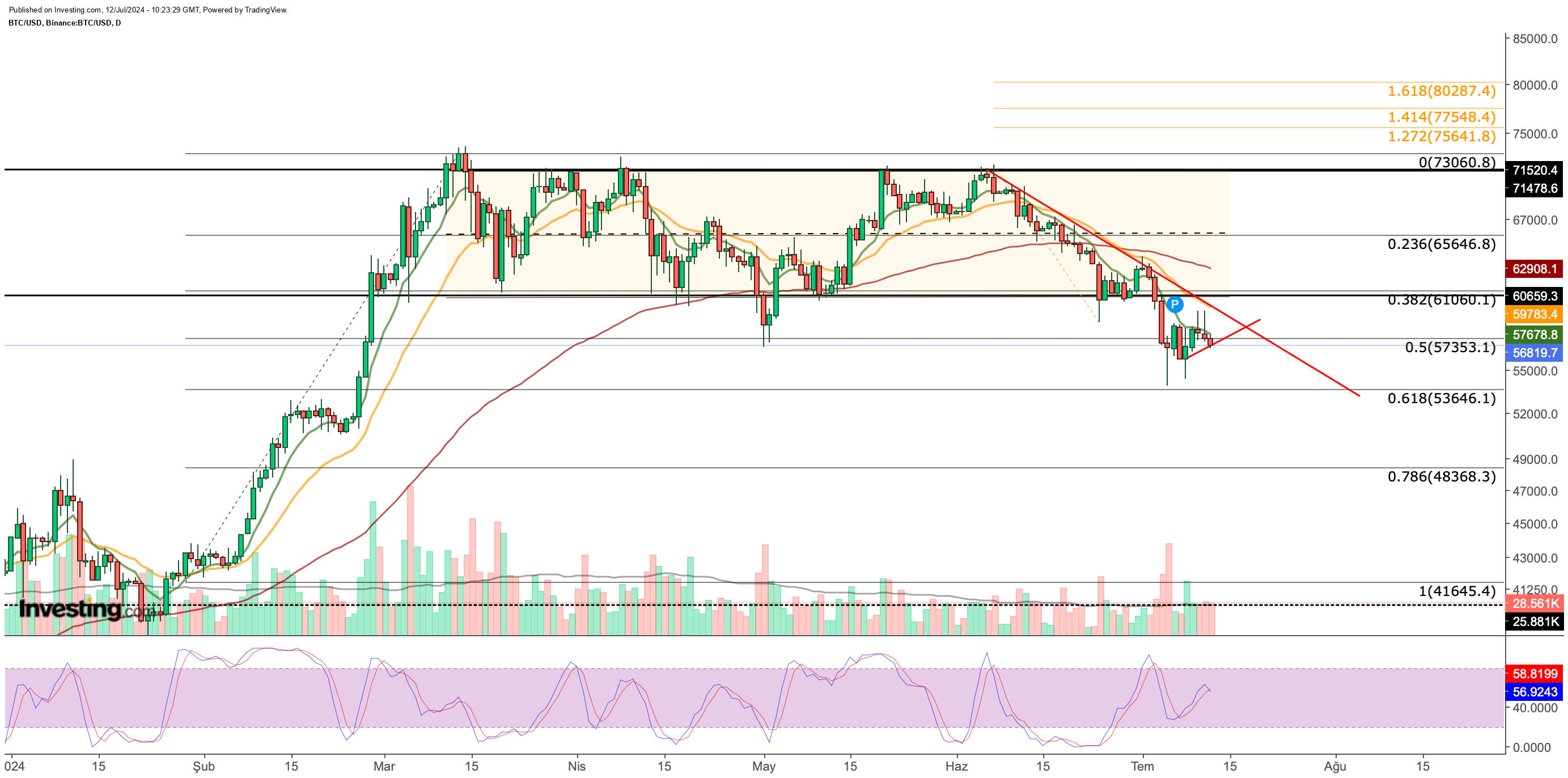TSX slightly up on precious metals rally despite October GDP contraction
- Bitcoin price shows resilience despite selling pressure, with buyers and sellers locked in a battle.
- German government's Bitcoin sales ease, but Mt. Gox repayments loom as a potential price dampener.
- US inflation dip fuels hopes for Fed rate cuts, a potential long-term positive for Bitcoin.
- InvestingPro Summer Sale is live! For less than $8 a month, unlock the AI-powered stock picks that are beating the market by 18.6% this year.
Bitcoin has shown resilience over the past week, despite its fear and greed index plunging to 'extreme fear' territory for the first time since January 2023. Despite continued selling pressure in the crypto market, positive developments have helped prevent further declines in Bitcoin's price. Currently, buyers and sellers are locked in a tight struggle as Bitcoin searches for direction.
German Government Sells Off Bitcoin
This week, the German government's transfer and subsequent sale of Bitcoins dominated the crypto market agenda. These sales, which have been ongoing since June, intensified significantly. Bitcoin tested the bottom level in the $54,300 range once again but rebounded, indicating strong buyer presence in the market.
The positive momentum in U.S. Bitcoin ETFs has helped mitigate the impact of Germany's sales. The assets in the German government's Bitcoin wallets have now fallen to levels that are less market-influential, with less than 10% of the initial BTC holdings remaining—equivalent to approximately 4,925 BTC, or $285 million.
Since mid-June, the German government's $3 billion BTC sell-off has disrupted market stability and dampened optimism. However, this pressure is expected to ease soon. Meanwhile, the looming Mt. Gox repayments add another layer of uncertainty.
Mt. Gox Repayments Begin
Last month, Mt. Gox announced it would start repaying creditors, distributing approximately $9 billion in Bitcoin and Bitcoin Cash over the next three months. While this is a concern for the Bitcoin market, the repayments are expected to be less damaging than Germany's bulk sales because the amounts will be smaller and more dispersed. Many users may also choose to hold their Bitcoins, anticipating future price increases.
US Inflation and Fed Policy Influence
Recent U.S. inflation data showed a decline, leading to increased expectations that the Federal Reserve will cut interest rates in September. A shift to looser monetary policy could boost risky assets like Bitcoin by lowering dollar yields and credit costs.
Bitcoin, sensitive to Fed policy, surged at the beginning of the year when a rate cut was anticipated but then declined as inflation rose and the Fed adjusted its outlook. Currently, expectations of one or two rate cuts this year are seen as supportive for Bitcoin, albeit less dramatically than earlier in the year.
Cryptocurrency Fear and Risk Appetite Index
The cryptocurrency fear and risk appetite index has fluctuated, first rising in June due to miner sales and later falling due to pressures from the German government and Mt. Gox. This week, the index dropped to 35, entering the fear zone. A similar decline occurred last August-September when Bitcoin faced selling pressure and market anxiety.
Despite short-term triggers for decline, long-term positive developments like the Fed's potential rate cuts and the anticipated Bitcoin halving strengthen predictions that the cryptocurrency market is on the cusp of a bull season.
Bitcoin Faces Price Compression Amid Volatility Surge
Bitcoin's price has recently experienced notable compression, signaling potential increased volatility ahead. Yesterday, the cryptocurrency surged to $59,000 following the release of inflation data. However, it quickly succumbed to familiar selling pressure, dropping to $57,000 today.
Bitcoin's momentum is waning, maintaining the risk of a retreat to $50,000 in the short term. The past week has seen significant price compression, often a precursor to heightened volatility.

Over the last seven days, Bitcoin has struggled to close above $58,200. It dipped to a low of $53,000 but swiftly rebounded, managing daily closes around $56,000 at its lowest. This pattern suggests Bitcoin has used $57,300 as a pivot point, aligning with the Fib 0.5 level from the recent bullish trend. Should Bitcoin close below $57,300 this week, bearish momentum may push the price down to the next support zone at $53,600. Breaking this support could drive Bitcoin into the $48,000-50,000 range.
Conversely, a weekly close above $57,300 is crucial for recovery. Additionally, Bitcoin must attract buyers in the $60,000 region to confirm a rebound. If achieved, Bitcoin could break the descending trendline from June, and the Stochastic RSI on the weekly chart would signal a bullish trend above $60,000. This could enable Bitcoin to recover to $65,000 in the short term.
***
This summer, get exclusive discounts on our subscriptions, including annual plans for less than $8 a month!
Are you tired of watching the big players rake in profits while you're left on the sidelines?
InvestingPro's revolutionary AI tool, ProPicks, puts the power of Wall Street's secret weapon - AI-powered stock selection - at YOUR fingertips!
Don't miss this limited-time offer.
Subscribe to InvestingPro today and take your investing game to the next level!

Disclaimer: This article is written for informational purposes only; it does not constitute a solicitation, offer, advice, counsel or recommendation to invest as such it is not intended to incentivize the purchase of assets in any way. I would like to remind you that any type of asset, is evaluated from multiple perspectives and is highly risky and therefore, any investment decision and the associated risk remains with the investor.
